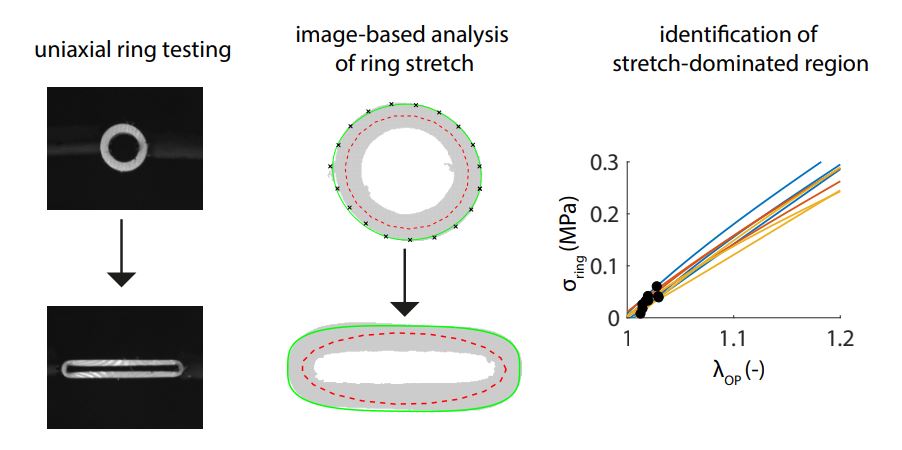A Uniaxial ring test is conducted by stretching a ring-shaped specimen in 2 opposite directions using pins or hooks. It is a common test for a variety of materials, from industrial elastomers to soft biological tissues. However, systematic errors can occur in the simultaneous compression, bending and stretching during the test that is geometry-dependent. Dr Kurniawan and his team from Eindhoven University of Technology work to resolve that by introducing a simple image-based analysis approach, accurately estimating the sample mechanical properties for a wide range of ring geometries. The samples were tested in an uniaxial displacement controlled experiment on the CellScale BioTester, with modified rakes: the pins point upward rather than downward, and the rakes were painted black to facilitate the automated analysis of the BioTester images. As proof of concept, they tested their approach on rat vascular grafts and discover a clear temporal change in the mechanical properties of these grafts after implantation.
Read the full journal article here: https://doi.org/10.1039/C8SM02343C
Read all other publications here: https://www.cellscale.com/publications/
To read about an engineered meniscus with zone-specific biochemical composition, click here.








